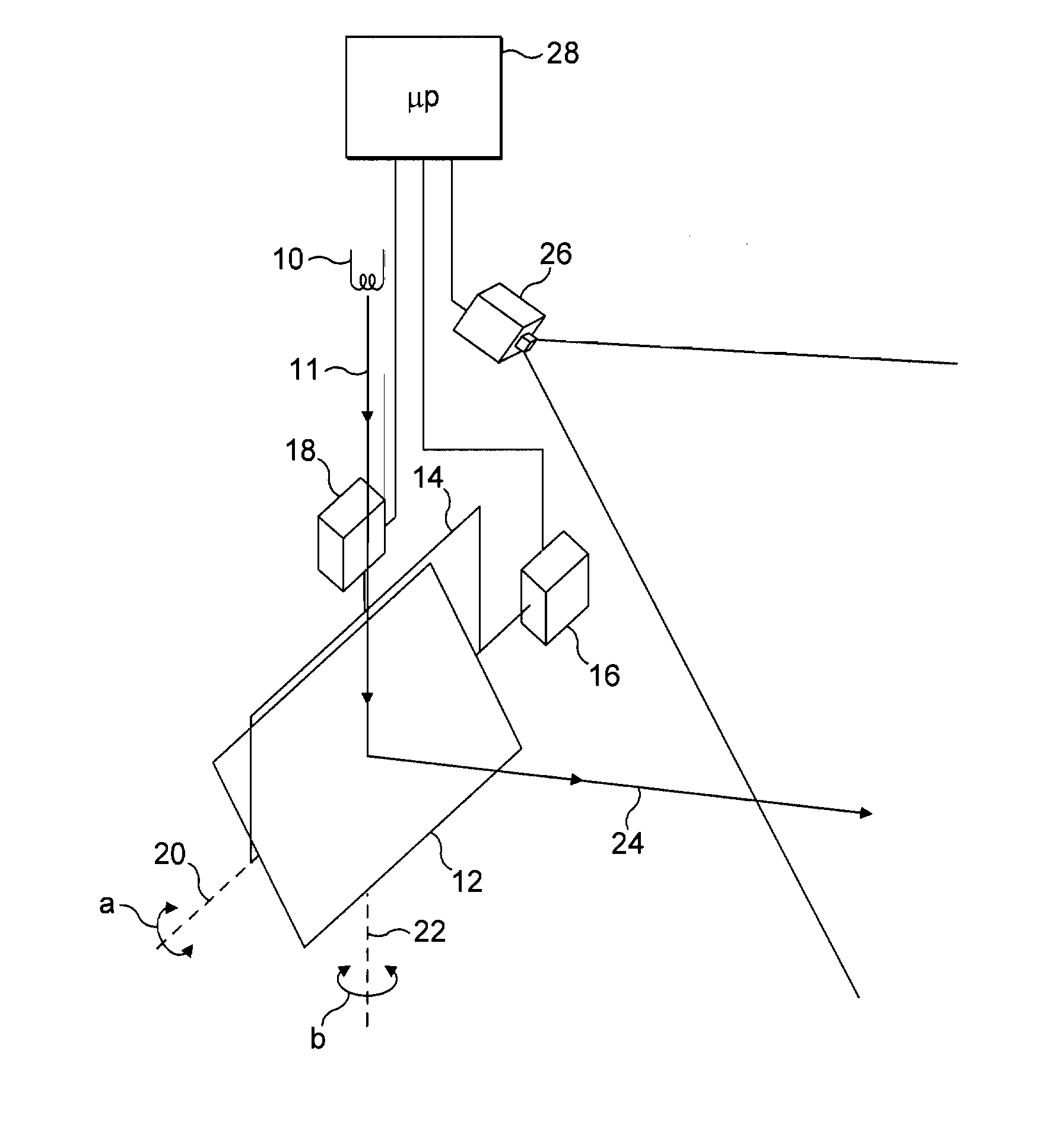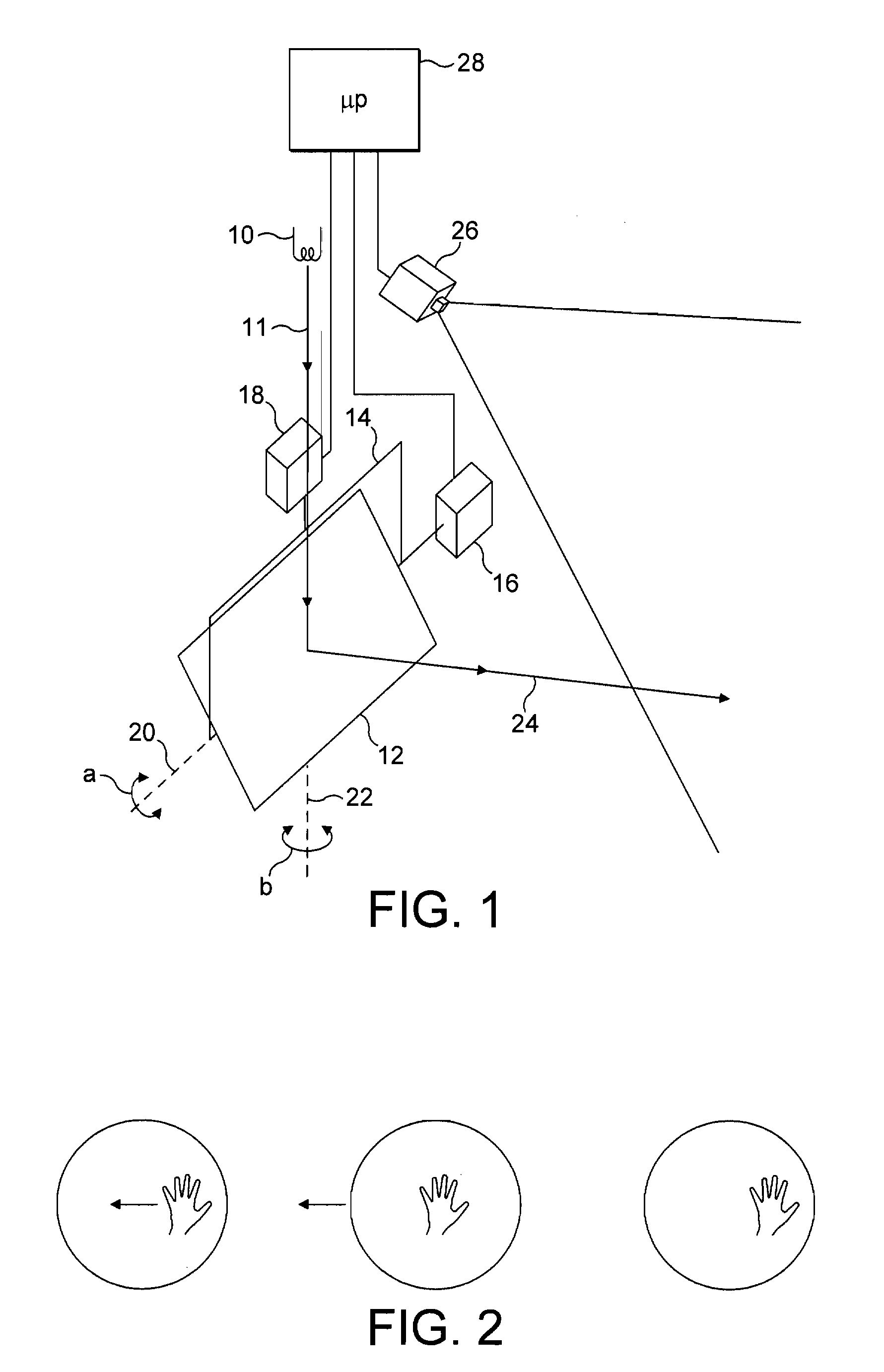Directable Light
a directable light and light technology, applied in the field of lighting apparatuses, can solve the problems of unsuitable application outside the field of specialist spotlight tracking, unsuitable for remote movement, complex and expensive apparatus, etc., and achieve the effect of simple and cheapness, and easy processing of beam images
- Summary
- Abstract
- Description
- Claims
- Application Information
AI Technical Summary
Benefits of technology
Problems solved by technology
Method used
Image
Examples
Embodiment Construction
[0031]Referring to FIG. 1 of the accompanying drawing, the apparatus includes a spot lamp 10, for example a 12 volt MR16 halogen bulb with integral reflector, which produces a light beam 11. This bulb offers a very bright, feathered and focused spot having a divergence of 8 to 12° that includes a substantial component of infrared radiation. In order to dissipate heat emitted by the lamp 10, it may be mounted on a heat sink (not shown).
[0032]The beam 11 is incident on a mirror 12, which can be rotated about a horizontal axis 20 by a stepper motor 16 and about a vertical axis 22 by means of a stepper motor 18, as indicated by the double headed arrows (a) and (b). This type of mirror is well known in the field of disco lighting and we used an Acme Winner DMX scanner mirror, which is generally used for directing spotlights across a disco dance room. The stepper motors 16, 18 are controlled by a microprocessor 28 via control lines, as shown, although they may be controlled wirelessly.
[00...
PUM
 Login to View More
Login to View More Abstract
Description
Claims
Application Information
 Login to View More
Login to View More - R&D
- Intellectual Property
- Life Sciences
- Materials
- Tech Scout
- Unparalleled Data Quality
- Higher Quality Content
- 60% Fewer Hallucinations
Browse by: Latest US Patents, China's latest patents, Technical Efficacy Thesaurus, Application Domain, Technology Topic, Popular Technical Reports.
© 2025 PatSnap. All rights reserved.Legal|Privacy policy|Modern Slavery Act Transparency Statement|Sitemap|About US| Contact US: help@patsnap.com


